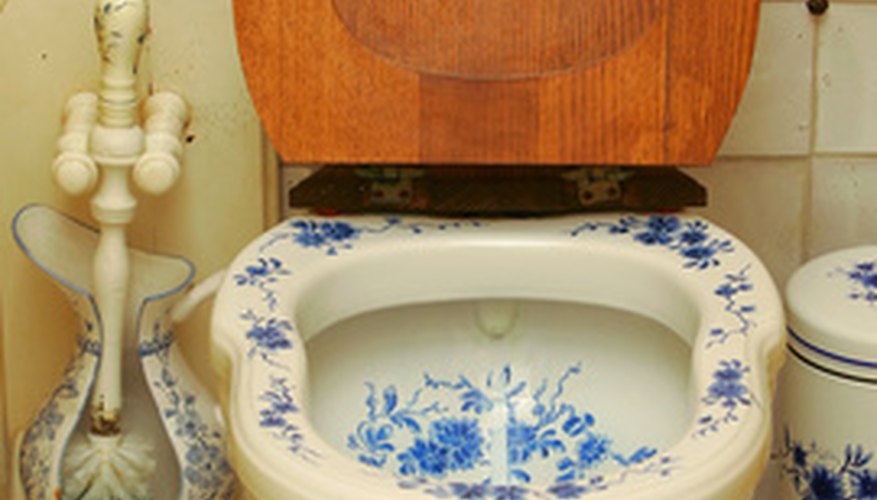Toilets require frequent cleaning for sanitary reasons. Accumulated waste particles and urine produce unsightly stains, while waterborne minerals produce heavy calcium build-up on toilet bowls. The longer stains remain on toilet bowls, the more difficult they become to remove. Dirty toilet bowls encourage germs and other contaminants, which creates an unhealthy environment. Certain cleaning agents are effective for treating badly stained toilet bowls.
- Toilets require frequent cleaning for sanitary reasons.
- Accumulated waste particles and urine produce unsightly stains, while waterborne minerals produce heavy calcium build-up on toilet bowls.
Scrub the toilet bowl with a brush to remove accumulated grime. Loosen difficult stains as much as possible with the brush.
Dampen a paper towel with white distilled vinegar. Lay the paper towel directly on the stubborn stains.
Pour one quart of white vinegar into the toilet bowl water. Keep the damp paper towel and vinegar in the toilet bowl overnight.
- Dampen a paper towel with white distilled vinegar.
- Keep the damp paper towel and vinegar in the toilet bowl overnight.
Remove the paper towel from the toilet bowl. Scrub the stains vigorously with the brush. Flush the toilet.
Inspect the toilet bowl for remaining stains. If necessary, apply an acid-based commercial toilet bowl cleaner to the stains. Wear gloves and safety glasses for protection against the chemicals.
Scrub the toilet bowl with the brush until all stains are completely removed. Flush the toilet when you've finished cleaning.
WARNING
Follow the manufacturer's directions on the commercial cleaner label for safety purposes; acid-based cleaners are corrosive if they contact the skin. Do not mix the commercial cleaner with other cleaning products; dangerous chemical reactions can occur.
